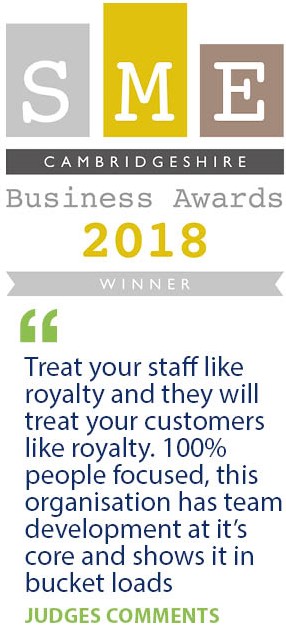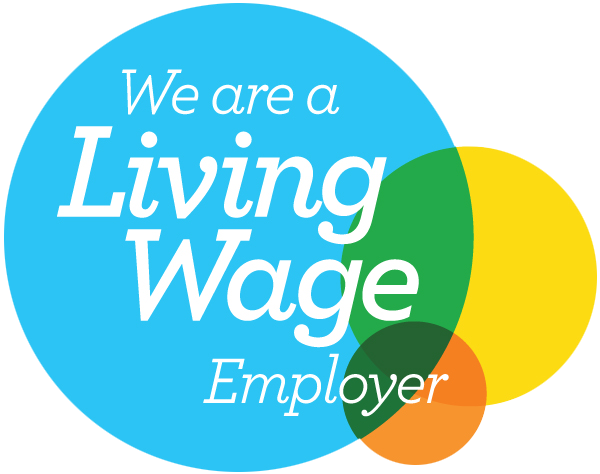
It is a type of agile working that will be a continuum of the flexible approach that organisations had to adopt overnight to navigate the constantly changing policies that posed a minefield for HR over this period. According to the results of our UK Reward Management Survey in spring, only four per cent of respondent employers predict a return to their previous way of working.
Here we examine whether the pandemic has truly been the catalyst for meaningful change and how employers can balance employees wanting to have new-found flexibility with those who want to return to the routine and social opportunity of the office.
Deloitte’s, ‘May the workforce be with you’ research report
As the government’s working from home directive has changed, the onus is back on companies to define what level of flexibility, if any, they are willing to offer employees. Deloitte’s ‘May the workforce be with you’ research reported that more than 100 million people in Europe made the shift to remote working during the Covid crisis, 45 million of which had never worked remotely before – either because the infrastructure was not in place, because they personally did not have access to it or because the job could not be done remotely. With rapid problem solving and incredible creativity shown, employers rolled out remote working overnight. With 18 months of working this way, agility has been accelerated by the pandemic and hybrid working is billed as here to stay.
Whilst 87 per cent of employers continued to offer working from home according to our UK Reward Management Survey, 67 per cent intended to make the return to the office voluntary. One in five anticipated a return of over 90 per cent of employees to the office by the end of 2021, with an average two or three days in the office expected.
Anecdotally from HR Professionals in our various sector-specific HR Groups, the take up has been slower than anticipated. There is a delicate balance to be achieved – organisations that have remained agile and responsive to the required pace of change during the pandemic have survived and thrived. Remaining so will ensure that employees feel that their wellbeing is prioritised, as businesses cannot afford to go the other way in mandating returns. The Leesman survey highlights the home as good for structured/formal meetings and activities requiring concentration, while the office is better for collaborative and social activities, including knowledge sharing.
Actively listening to employees is critical. People will have their own experiences of the pandemic – from losing loved ones to catching Covid themselves – which will shape their feelings about a return to the office. Each employee should feel like they are listened to openly, without fear of judgement. Gauging employee concerns and how they want to structure work and wider life can help create informed policies in line with what people want.
If organisations expect everyone back in the office for five days a week when the consultation period is flagging that people want greater flexibility, this raises the question about the impact on employee turnover. Whilst it is not possible to please everyone, blanket rules for being in the office after productivity levels were maintained over the pandemic might feel arbitrary and prompt employees to seek alternative employment if they cannot be accommodated. People’s health, wellbeing and safety should remain the priority, so communication will be critical in how that approach is managed. Those employers who embrace change can use it to gain a competitive edge in attracting and retaining talent.
A very important cultural shift in the working world has happened. Before the pandemic unfolded, we spoke at length about the Future of Work, and predictions around how the drive for automation would free up people’s time to focus on more creative and liberating roles that drove productivity. In fact, the fourth industrial revolution has seen more of a shift in values. People have come to value a greater work-life balance, from those that can do the school drop-offs by working flexibly to others who can exercise instead of embarking on daily hour-long commutes.
Individuals are increasingly left to define what success means to them, which empowers employees to make bold moves free from the strictures of policies and ‘the way things have always been done’. Presenteeism has always had its place whether consciously or otherwise, but employers need to learn from the efforts of employees over this period to protect productivity, with reports that these levels have actually increased over lockdown.
Paul Allsopp, The Agile Organisation
Open dialogue with workforces is crucial. Offering employees greater choice and opportunity needs to be balanced with business needs. By understanding the root causes of any reluctance to return to the office, it is easier for organisations to address these. For instance, if it is the safety aspect of being back in the office, employers can instead focus on the Covid-secure measures they have implemented to protect employees. Phased approaches can be considered to build up people’s confidence to return to a physical workplace.
Paul Allsopp is the author and MD of The Agile Organisation that supports organisations in their quest for change, greater agility and implementation frameworks. He emphasises that hybrid working is not about a ‘one-size-fits-all’ solution:
“The details “behind the label” will determine the actual practical application of the approach and model adopted. But most will not be as simple or straightforward as the headlines often suggest. Choice and variety, trust and empowerment are the heart of agile working. While some see autonomy of choice in ways of working by staff or teams as the way forward, others may focus on a more prescriptive approach. Whatever the approach the key to success is engagement and communication with your people and clarity and establishment of the boundaries and means of the working model. At the same time the model must also be agile and capable of embracing ongoing change.”
Paul believes that work is about activity, not place, and culture and inclusion comes from creating communities that will be increasingly virtual. Used effectively and when tailored to the team, hybrid working can widen the talent pool, increase retention and create a more diverse workforce as traditionally under-represented groups can be employed by removing the barriers of needing to physically report to an office.
It is important to be genuinely committed to learning and experimenting. Being too definitive or prescriptive risks creating a burden and actively hampering people’s work, whilst a principles-based approach that allows some freedom and room to manoeuvre will have greater scope to work long-term.
By blending on-site and off-site approaches, team members may be working from different locations at different times. Anecdotally, employers are reporting that some employees have moved abroad without notifying them, which will shape their ability to return to the workplace. Planning and organisation will be required for those who embrace hybrid working, with few precedents to follow. It is likely that some experimentation will be required to determine what works best in particular contexts.
It is crucial that employers consider how they can set policies in a fair and transparent way. Whilst companies can instruct employees to return to the office, it does not mean they automatically should. Businesses need to be clear on their reasons for requiring this of people and ensure that policies are applied uniformly across the company without any risk of discrimination. Employers have concerns that their people might come in on random days and miss one another, risking diluting the team and team-building opportunities. A lot of employers are reporting that the short-term solution is not necessarily a long-term change to ways of working.
Many are seeing how their new terms and conditions pan out as they seek to balance new working arrangements with stability. Whilst some are enshrining this formally in contracts, the CIPD cautions against changing employment contracts too quickly, instead opting for informal flexibility and changing the culture. Some companies will instead be updating their company handbook in the form of a new policy.
Line managers will be crucial in the roll out of hybrid working. Organisations are managing more complex, hybrid and distributed workforces, meaning that line managers are the gatekeepers between employee experience and monitoring productivity. Organisations rely on strong management to maintain corporate culture, making remote and workplace experiences seamless. A key part of this is performance management, with the risk of ‘proximity bias’ – accidental favouritism that arises from consistent interactions if they sit near someone rather than have to video call someone working from home. To overcome this, leaders should ensure they have a system in place to connect with everyone on their team regardless of their physical location. Being alive to how hybrid working can be just and fair for all will be critical to its long-term success.
Where members of staff in the same team request different flexible working hours, employers will have to formulate a consistent approach. Managers will have to be trained to deal with the practical issues of how teams can work most effectively with one another. Tech systems had to be rolled out overnight to meet the demands of working from home and will have to be maintained and invested in to support collaboration from numerous locations.
There is also the issue that some employees have made permanent and significant lifestyle changes since March 2020. Those who have adopted pets, moved abroad and even taken on side projects during this time will be struggling to accept a return to the workplace. A level of flexibility and virtual working is now an expectation. Disabled employees have also reported that the world of work has more readily opened up to them given the barriers to working that have been removed with the shift to online.
Feedback is also important from a wellbeing and mental health perspective. Line managers must recognise the signs, and support individuals, earlier than when they need to seek help. Having ongoing open and confidential discussions can help reduce the risk that people will struggle further down the line. Any return to work may be accompanied by anxiety for employees, so line managers need to be equipped to have effective conversations. Paul Allsopp notes that, “The scale of remote working over the last 18 months and the anticipated continuation through hybrid working has ensured these issues cannot be considered only a fringe problem applicable to the more limited numbers of home/remote workers pre-Covid. As such, health and safety has now taken centre stage, not only in terms of the impact on individuals and businesses but also the NHS resources required to deal with the outcome of these issues.”
14 per cent of respondents to our UK Reward Management Survey reported that they are looking to reduce their office space. Physical workspaces are being re-thought out to spark innovation and creativity, geared towards open areas, meeting rooms and places to support collaboration.
RBS International
RBS International, one of Jersey’s biggest employers, has announced a permanent shift to hybrid working that sees employees blending time between home and the office, shutting one of their offices and refurbishing its headquarters to transform it into shared desks, break out areas and Zoom meeting rooms to support the transition. The workspace environment is designed to support engagement with one another and with those working from home.
Another key part of their success is the move to digital. The first lockdown proved they could continue to deliver to customers as they set everyone up to work from home. The new way of working was actually popular with customers who appreciated the new more flexible ways of interacting, such as Zoom or Teams meetings to do mortgage interviews or other key meetings. Agile working has enabled them to put even greater focus on the client’s needs with frontline teams, branch workers, relationship managers, risk teams, finance teams and tech teams all working with the customer as the focus, with customers more inclined to bank digitally.
Chester Local Authority
Beyond size or sector, it is important to factor in the variables that impact which ‘shade’ of hybrid an organisation adopts. There will be variations to suit the different requirements to best support a variety of work activities, capabilities, styles, cultures and mindsets. Based on location, there are four main shades of hybrid that could be simply termed “mainly office”, “office centric”, “remote centric” and “mainly remote”. Agile working enabled Chester Local Authority to drive a more productive, efficient and effective operating model through hybrid working. Council employees will be divided into three categories: agile (based at home); hybrid (work between home and the workplace); and fixed (staff on-site). Implementing the model based on individuals and teams demonstrates the importance of tailoring the approach.
Throughout the pandemic, organisations have had to inspire their employees through purpose and clear leadership, whilst adapting to volatility. Whilst the ‘new normal’ for many will be a form of hybrid working, this has moved the focus onto the long-term impact of hybrid on individual employees. Have your say on your experience of setting workplace policies and setting your post-pandemic workplace strategy in the autumn edition of our UK Reward Management autumn survey.
To help inform your approach to hybrid working, Paul Allsopp is the Founder, Managing Director and principal consultant practitioner at The Agile Organisation, a niche consultancy with a strong track record in helping organisations deliver change and performance improvements through agile working.

Managing Director
Tim is a passionate HR specialist with over 20 years’ experience in pay and reward. As a director of Paydata, Tim has worked with thousands of satis...
14 October 2025
Salary Benchmarking: Why it matters more than ever Salary benchmarking can feel time-consuming and c...
21 September 2021
Job vacancies have hit an all-time high as the economy recovers. The number of vacancies posted betw...
14 September 2021
Businesses are emerging from the pandemic increasingly thinking about how best to organise their app...
Sign up for briefings on pay benchmarking, salary surveys, reward strategy and statistical updates.
sign up for updates
© Paydata Ltd 2025 All rights reserved.
Registered in England no: 3632206
VAT no: 728 0808 28
Paydata Ltd, 24 Commerce Road, Lynch Wood, Peterborough, Cambridgeshire, PE2 6LR

